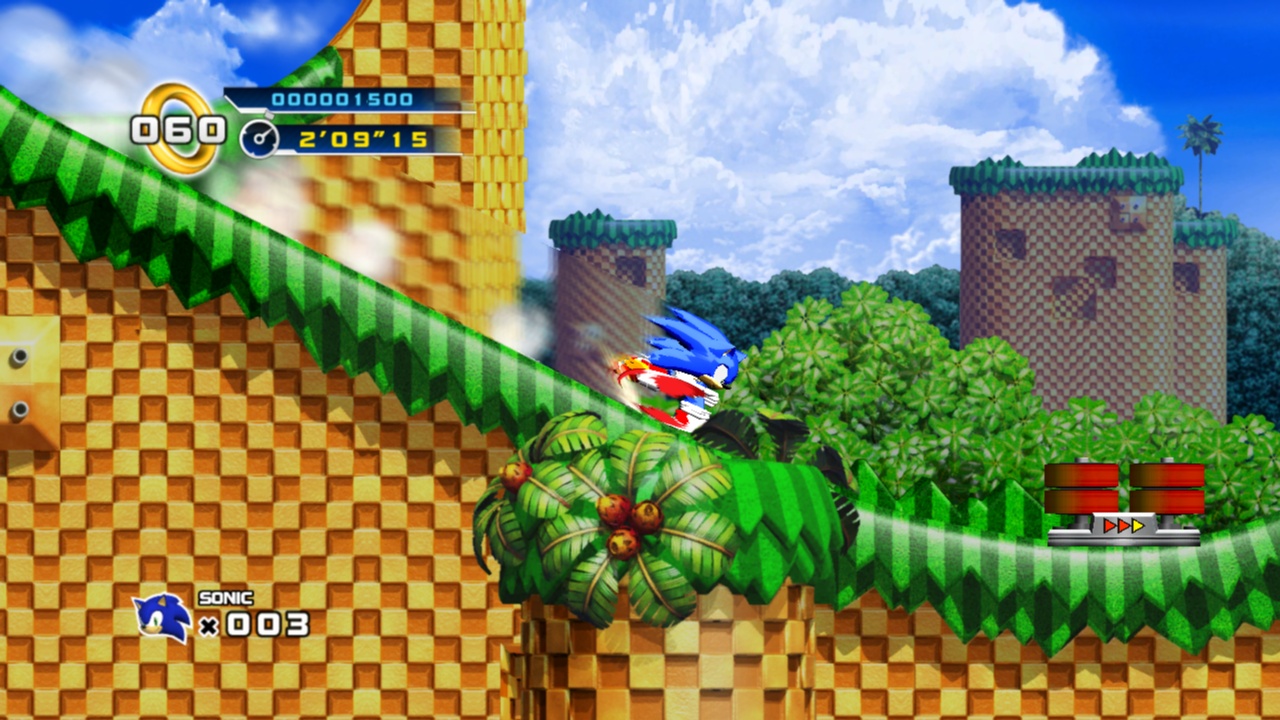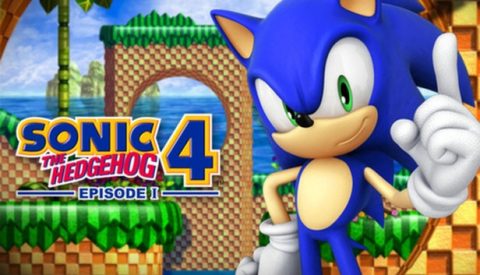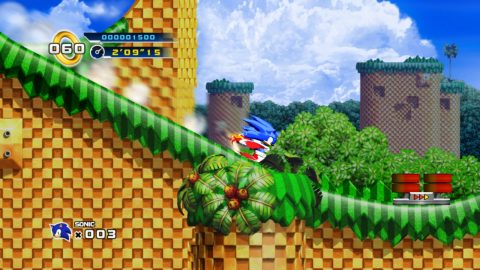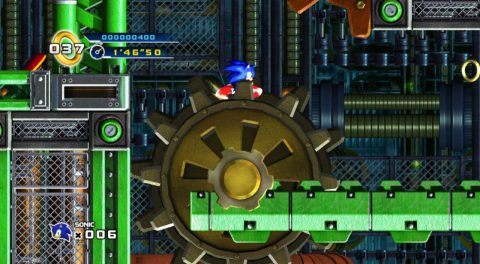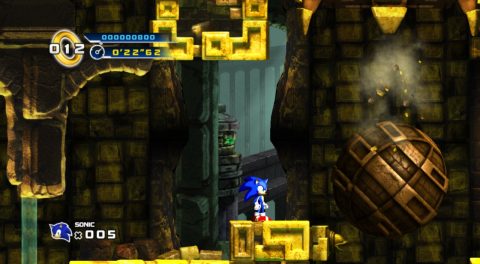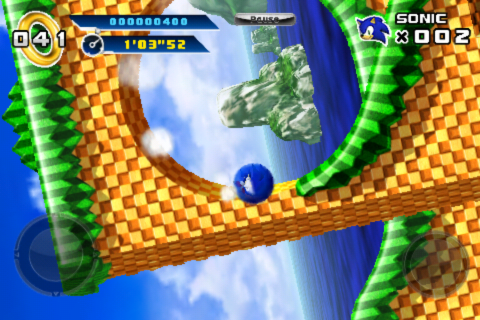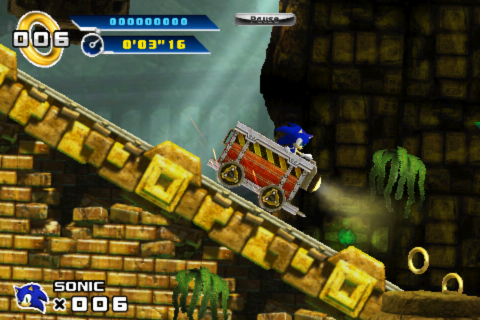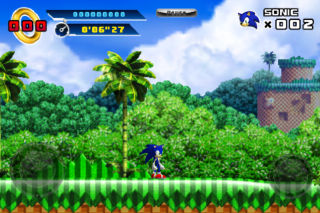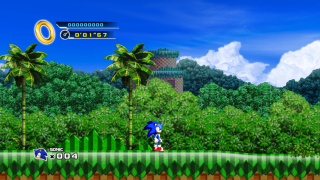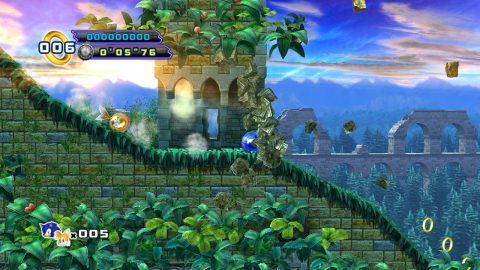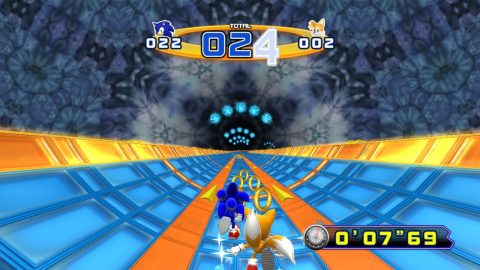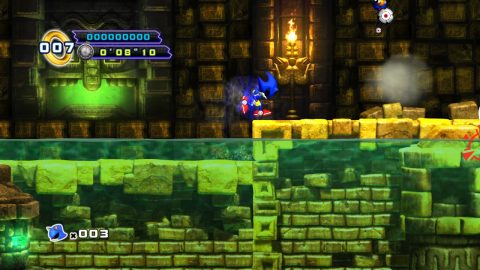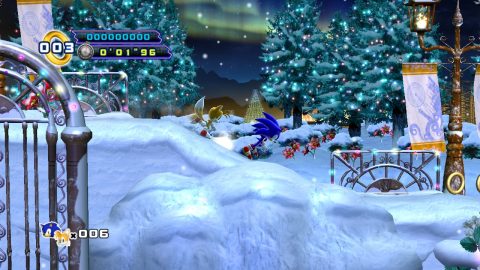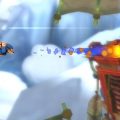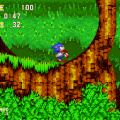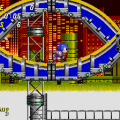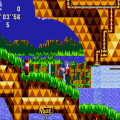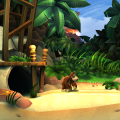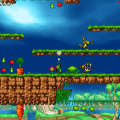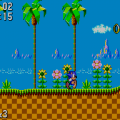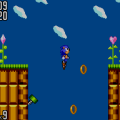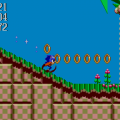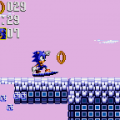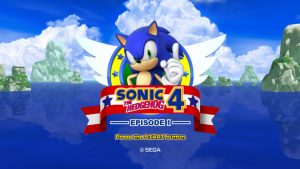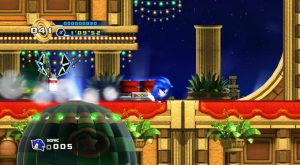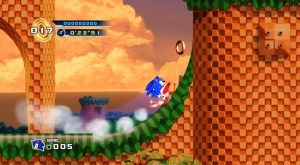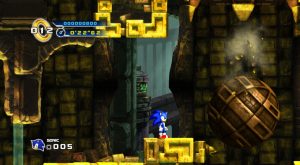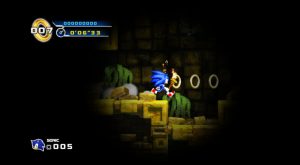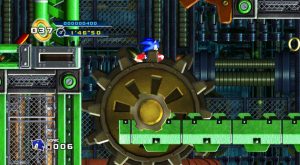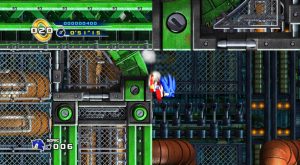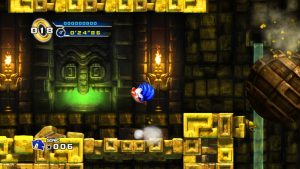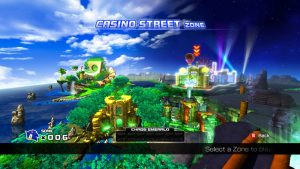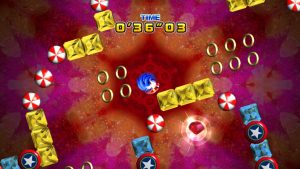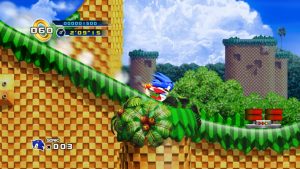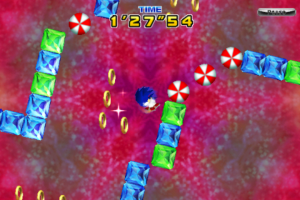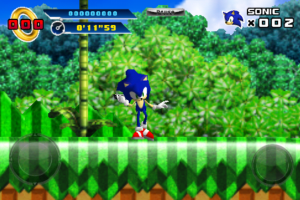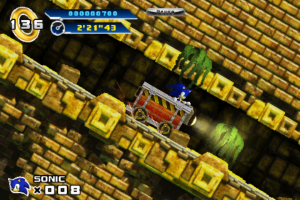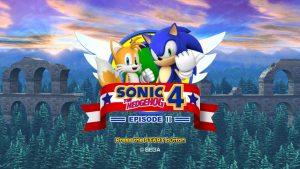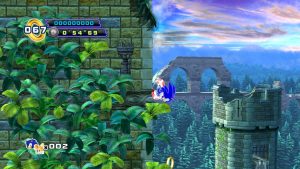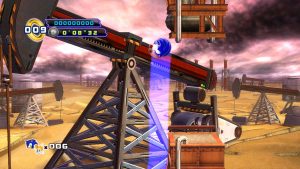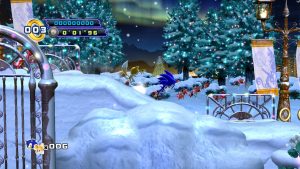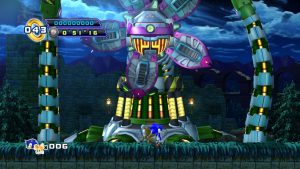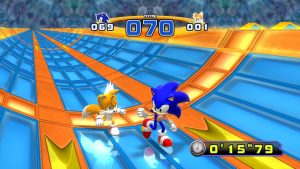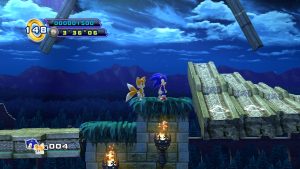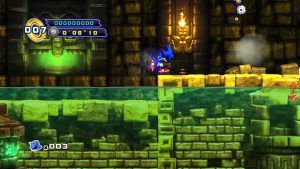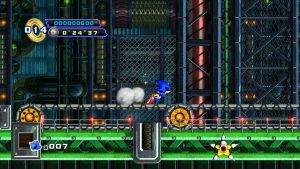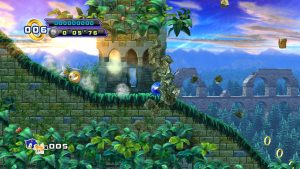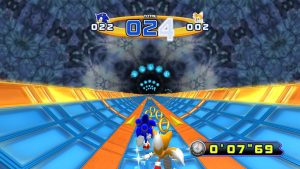- Sonic the Hedgehog
- Sonic the Hedgehog 2
- Sonic CD
- Sonic the Hedgehog 3
- Sonic & Knuckles
- Sonic the Hedgehog 4
- Sonic Mania
- SegaSonic The Hedgehog
- Sonic The Fighters
- Sonic 3D Blast
- Knuckles’ Chaotix
- SegaSonic Bros.
- Sonic the Hedgehog (8-bit)
- Sonic the Hedgehog 2 (8-bit)
- Sonic Chaos
- Sonic the Hedgehog Triple Trouble
- Tails’ Skypatrol
- Tails Adventures
- Sonic Labyrinth
- Sonic Drift
- Sonic Drift 2
- Sonic Blast
- Sonic R
- Murder of Sonic the Hedgehog, The
While Sonic the Hedgehog and his friends continued to remain popular in the post-Genesis era, the series was never quite the same when it went into the third dimension, and each subsequent game after the Dreamcast Sonic Adventure titles suffered noticeably downgrades in quality. It hit its absolute nadir with the 2006 Sonic the Hedgehog title for the PS3 and Xbox 360, which was widely lambasted for being an entirely broken mess. The 2010 title Sonic the Hedgehog 4 (which began under the name “Project Needlemouse”, an ode to Sonic’s original name), promised to be a return to the classic days of the Genesis, focusing entirely on 2D gameplay and ditching most everything of the 3D games.
Of course, 2D Sonic never really left – through the 2000s, the series continued on the Game Boy Advance and DS, under the Sonic Advance and Sonic Rush labels. These were developed by a company called Dimps, which was formed by former SNK vets and had some experience with Sonic, having worked on Sonic Pocket Adventure for the Neo Geo Pocket Color for their former employer. This team was tasked with the development of Sonic 4, with Takashi Iizuka, a designer on Sonic 3 who had since become a prominent member of Sonic Team, acting as producer.
It had what seemed what the right people in place, and yet Sonic the Hedgehog 4 turned out badly. Very badly.
The game opens up with the classic “Sega!” voiced jingle and Sonic popping up behind his famous logo while wagging his finger. Yet the choppy animation here is just a prelude to the sort of issues that plague this title. When the actual game starts, it’s hard to get over how ugly it looks. It’s two dimensional, yes, but it’s all bright and gaudy computer generated backgrounds that look glaringly bad. The backgrounds are 2D but the sprites are 3D, and they too look rather poor, with Sonic seemingly colored to look cel-shaded, but it looks like the artists only got halfway done with it.
The sound is equally poor. Many of the sound effects are faithful, and the music attempts to emulate the classic games. But instead it seems like someone had a vague memory of what the Genesis sounded like, didn’t much care for it, and then created the whole soundtrack based on that. The melodies are decent, but it’s very hard to appreciate them beneath the awful sound quality. This wasn’t done by any amateur either, as it was provided by Jun Senuoe, longtime contributor to the Sonic 3D games, and even did the music for Sonic 3D Blast for the Genesis. At least there are a number of fan remixes that “fix” these songs, so at least the core of them can shine through.
Beyond how bad it looks and sounds, it also plays very, very poorly. Nothing about the way Sonic controls feels right, to his slow acceleration to the lack in momentum in jumps. For some reason, it inherits the “homing dash” functionality found in the 3D games (and also carried forward to Sonic Rush), where if you hit the jump button in mid-air you’ll either automatically dash towards springs or enemies if you’re close enough, or just sorta tumble forward if you’re not. It made sense in 3D, where accurately jumping on enemies is difficult, but it’s a weird crutch in 2D.
The game was promised as going back to its roots, ditching all of the “friends” and gimmicks from later games. Unfortunately, that also meant going back to the ideas of the very first game and ditching everything from the subsequent Genesis titles. The only character is Sonic, without any Tails or Knuckles. It uses the old three-level act structure (plus a boss fight, which is represented as a separate area here) but the level designs are longer than they were in the first two games, and so they tend to drag on. The level layouts are fairly poor too, replacing much of the exploration and platforming with springs, boosters, or simple enemy chains to dash through (though some of these issues can be sourced to Dimp’s other Sonic games too). One of the few things it does keep is the ability to turn into Super Sonic when getting all of the Chaos Emeralds. The levels also evolve over the course of the acts, arranging the songs and changing some aspects like the time of day.
Many of the levels are based on areas found in previous games – Splash Hill Zone (Green Hill), Casino Street (Casino Night), Lost Labyrinth (Labyrinth), Mad Gear (Metropolis) and E.G.G. Station. As such, there’s very little to actually see new here, though Lost Labyrinth is a better take on the zone than in the original game at least, since it’s more focused on speed and less on clumsy underwater sections. Conversely, Mad Gear is even worse than Metropolis, if mainly because it’s hard to tell which parts of the background are solid floors and which aren’t. After beating the first level, you can play any stage in any order, save the last.
Part of the reason that the game ended up like this is because it’s believed this wasn’t initially intended to be a numbered, “mainline” Sonic the Hedgehog title – it was just something low budget for the burgeoning smartphone market, that was renamed in order to attract more attention. (You can still see signs in the Casino Street level that read “Sonic The Portable”.) That explains its low quality visuals and nostalgia-bait level types, though not everything else. Indeed, while the Sonic Advance/Rush games from Dimps weren’t a patch on the Genesis games, at least they were basically functional, where Sonic 4 can’t even hit that bar. It’s true that much of the game’s poor reception among fans stems from the expectations placed on it as a return to the glory days, but even aside from that, it’s still just not very good at all.
As a mobile game, it was originally intended to use the phone’s gyroscope in various ways – there are two levels in the iOS/Android version where you can tilt the device and cause the whole screen to rotate, in order to fling Sonic through the levels. These obviously wouldn’t work on any other platform (an analog stick or the shoulder triggers would replicate the functionality but wouldn’t feel the same), so they were replaced with different stages for the other releases. The mobile versions do use a cool trick where the whole screen rotates when going around loop-de-loops, though this probably would’ve looked too dizzying on a larger screen. The one implementation of this which is kept the same across all versions is the special stage, a replication of the one from the original Genesis game. Here, you directly control the screen rotation, much like the Taito game Cameltry/On the Ball, rather than simply guiding Sonic through an automatically spinning maze.
Sonic the Hedgehog 4 was initially released on console platforms, including on the Wii (at 480p) and on the PlayStation 3, Xbox 360 and Windows, which run at 1080p in widescreen. Other than screen size and resolution, there aren’t any major differences between the versions.
During its development, early footage of the game was leaked onto the internet, where just watching it in action clued people into the fact that it didn’t look or feel right. The game was delayed for a few months to address some of these, though the final product still turned out poorly. Still, the team took the criticisms to heart, and the games follow up was a significant improvement.
Screenshot Comparisons
The Sonic the Hedgehog 4 project was planned as an episodic release, owing to the fact that the original release was fairly short, with only 13 stages (plus boss fights). The second episode came out about two years after the first, though it skipped a Wii version, focusing just on HD, mobile, and computer platforms.
Much as the first episode drew from the first game, the second takes some elements from the second, particularly the inclusion of Tails. He doesn’t just follow after Sonic though, as there are a few “tag action” moves, borrowed from Knuckles Chaotix and Sonic Advance 3, that they can use in tandem, including Tails grabbing Sonic so he could fly (only really used in the 16-bit games in two player mode and during a boss fight), joining hands to form a powerful rolling force that can take down strong walls, or essentially become a submarine. The 3D half pipe bonus rounds also take after Sonic 2.
The visuals mark a substantial improvement over the first episode, as the backgrounds are represented in 3D, making this a proper 2.5D game. The polygonal models aren’t as ugly anymore either. The physics aren’t quite perfect, but it still feels less sluggish, and closer to how the Sonic Advance games control. The downside to this is that the mobile versions don’t run as smoothly, at least depending on the hardware, though they run fine on the consoles and computers.
Once again, there are five acts, many similar to the old games: Sylvania Castle (Aquatic Ruin), White Park, Oil Desert (Oil Ocean), Sky Fortress (Sky Chase/Wing Fortress/Flying Battery) and Death Egg Mk. II. While most of these still feel a little recycled, White Park is the lone standout. Others have separately used its concepts (Ice Cap as a snow/ice level, Carnival Night as an amusement park), but with them combined, it gives the zone a pleasant Christmas-y feeling. While the later Sonic Mania completely ignored Sonic 4, this is one setting that would be nice to revisit, especially if it were redone in pixel art.
The music quality is still extremely inconsistent, but as with the visuals, it’s a definitely upgrade and there are at least a few decent tunes to be found. One of the White Park track recalls the Twinkle Park songs from Sonic Adventure, and the Sky Fortress and Metal Sonic songs (the latter being a remix of the Stardust Speedway song from the Japanese Sonic CD) are excellent. However, some of the Oil Desert songs are ruined by some irritating samples. Metal Sonic returns here too, as the return of Little Planet from Sonic CD is one of the main plot points of this episode, and ties the two games more closely together.
If you have a save game from the first episode, it also unlocks “Episode Metal” for this game (called “lock on”, as a reference to Sonic 3 & Knuckles), there’s an added episode where you play as Metal Sonic. Here, you just revisit levels from the first episode, though only one in each zone, and some things have been rearranged. Still, Metal Sonic’s abilities aren’t really any different from his good guy flesh-and-blood counterpart, despite technically having the ability to fly. The ugly 2D visuals haven’t changed, but at least they benefit from being played with the improved controls and physics of Episode II. Amusingly, the “level” end signs are changed from Sonic to Metal Sonic, rather than flipping over Robotnik’s face, implying that you’re just chasing after Sonic through levels he’s already been though.
Technically Episode II isn’t all that great – it’s still not on the levels of the classics, especially in level design, and nowhere near the quality of the later Sonic Mania, which does a far, far, FAR better job of maintaining the classic feel. But it’s also not as plainly awful as the first episode, and close to the quality of the GBA/DS games – there’s enough interesting things about it that make it worth a playthrough for Sonic fans. The versions of Sonic Colors and Sonic Generations for the DS and 3DS, released around the same time as the Sonic 4 episodes and also by Dimps, were also reasonably alright, suggesting that maybe they just had their lesser staff working on the first episode.
At any rate, while the first episode was a large success – Sega claimed over one million downloads – apparently the second wasn’t large enough for them to continue any more episodes, so the Sonic the Hedgehog 4 project came to an end. Still, it was clear that there was a pent up desire for the return of classic Sonic titles, first manifesting itself as Sonic Generations in 2011, a mish-mash of 2D and 3D styles and aesthetics, and then finally Sonic Mania in 2017.
